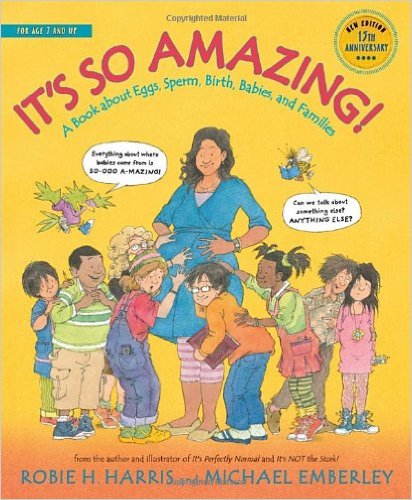Talking To Your Partner About STIs
Talking to a partner about STIs can be a new conversation. At times, some people are not sure how to talk to their partner about STIs and most importantly, testing for STIs. This video describes how to talk to your partner about STIs, testing, and seeking help and information from a healthcare provider. [AMZ-155]
Youth
Sexually Transmitted Infections (STIs) are infections that can pass from one person to another during sexual activities, including vaginal, oral, or anal contact. Sometimes, people who have an STI don’t show any symptoms, so they might feel completely okay without knowing they have an infection that can spread to others. That’s why it’s important to have open conversations with a partner about getting tested for STIs.
Talking to a partner about STIs and getting tested is an important step before considering having sex. Getting tested with a current or new partner is a great way to stay safe from STIs. It’s normal to feel a bit awkward starting this conversation, but once you’ve talked about it, you’ll feel better.
Remember, getting tested for STIs isn’t about distrusting a partner. Some people can have an STI for years without knowing it. Testing is the only way to be certain if a partner has an STI. It’s important because it shows you care about both your health and a partner’s.
Discussing STIs with a partner is just as crucial as talking about your preferences, interests, and desires. Make sure to speak with a doctor, visit a sexual health clinic, or talk to a trusted adult about your overall sexual health and getting tested for STIs.
FAQs
Most STD tests are quick, easy and painless. Depending on which STD a person is being tested for, they may urinate or pee in cup or have their genitals or the inside of their cheek swabbed. All of these tests are painless. It is possible a person may get a blood test, where a health care provide draws blood or does a finger prick. Both of these may involve some quick, temporary discomfort. What is important to keep in mind is that testing—even if it involves some temporary discomfort—is the one way to know if you have an STD and to start treatment if you need it.
Herpes is the only STD that can be passed through kissing. This usually happens when one person has a sore on or around the mouth and then kisses another person. It can also happen during a select number of days throughout the year when the virus is more active in a person’s body and when they may have no symptoms at all.
The only 100-percent effective way to avoid getting an STD is to abstain from sexual touching below the waist, such as rubbing bodies without clothes, vaginal-penile sex, oral sex and anal sex. Your next best bet is to practice safer sex, such as using either a male or female (internal) condom and/or dental dam every time you have any type of sex. Once you start having sex, it’s also important to get tested regularly for STDs and to ask your partners to do the same.
A condom is a thin piece of latex, polyisoprene or polyurethane that is worn over the penis during oral, anal or vaginal intercourse to prevent pre-ejaculatory (pre-cum) fluid or semen from entering a partner’s mouth, anus or vagina. Condoms can be made of latex, polyisoprene, polyurethane and natural skin, but only latex, polyisoprene and polyurethane condoms prevent the transmission of sexually transmitted diseases. Condoms can be found in most supermarkets and drugstores.
Test your knowledge
Parents
Before your young person considers having sex, discussing STIs and testing is crucial. Inform your young person of the importance of getting tested for STIs for their personal health and protecting the health of their potential partner. Getting tested first is one of the most effective ways to prevent STIs. Although this conversation might feel a bit uncomfortable for you and even for your young person, once you’ve had it, you’ll feel relieved.
Remember, getting tested for STIs is not about mistrust of your young person or their potential partner. Some people may unknowingly have an STI for years without showing any symptoms. Testing is the only way to be certain for your young person to know if they have an STI, if they are engaging in a sexual activity.
After discussing the importance of testing with your young person, it is important for your young person to discuss STI testing with a potential partner before engaging in a sexual activity. This can also include encouraging your young person and their potential partner to share their STI results with one another. It might feel nerve-wracking for them, but it’s an important part of a relationship. If your young person or their partner tests positive for an STI, it’s vital to communicate the results with their partner and with you as their trusted adult to provide them the support and help they may need. This can include taking your young person for medical help and treatment. It is important to know that STIs take time to appear on a test, and most people don’t show any symptoms.
If your young person or their partner tests positive, it’s essential for them to remain calm, be honest, and straightforward. Knowing the facts is important, and it’s okay to encourage your young person to ask questions. Discussing how to keep each other safe is crucial. They might need some time and space to process the news, which is normal. Encourage them to speak to you as a caregiver and their doctor about ways to protect themselves.
To prevent STIs, it’s vital to talk to your young person about using protection methods like condoms, dental dams, or other barriers each time that they decide to engage in a sexual activity.
Discussing STIs with your young person is just as important as sharing your preferences, desires, and interests. Make sure that they talk to a doctor, visit a sexual health clinic, or reach out to you as their trusted adult about their overall sexual health and getting tested for STIs.
Conversation Starters
For example, if a sex scene comes up on TV, there is an opportunity to talk about whether the partners talked about safer sex or used a latex barrier, like a condom or dental dam. While you may be nervous about having these conversations, a simple, “Wow, do you think they’re worried about STDs or HIV?” is one way to start the conversation.
If you are shopping together in the market or drugstore, walk up the aisle where the condoms are hanging and ask your child if they know what condoms are and how they are used. Purchase a pack to take home and open so your child can see what they look like and how they are used.
Educators
Before a young person considers engaging in sexual activity, it’s crucial to discuss STIs and testing. As an educator, it is important to emphasize getting tested for STIs, not only for a student’s personal health but also to protect the health of their potential partner. Share with students that being tested before engaging in a sexual activity is the most effective way to prevent STIs. For some students, discussing STIs might be uncomfortable for both them and their potential partner. Share with students that once they have had that conversation with a potential partner, they may feel more at ease that they had it.
Remind students that getting tested for STIs is not about mistrust of their potential partner. Share with students that some people may unknowingly have an STI for years without showing any symptoms. Testing is the only sure way to know if they have an STI, if they are engaging in a sexual activity.
After discussing the importance of testing with your students, share with students that the next step is to discuss STI testing with a potential partner before engaging in a sexual activity. This includes encouraging students to share their STI results with their potential partner. It might feel nerve-wracking for them, but it’s an important part of a relationship. If someone in the relationship tests positive for an STI, it’s vital to communicate the results with their partner and a trusted adult to provide them the support they may need.
If a student or their partner tests positive, it’s essential for them to remain calm, be honest, and straightforward. Knowing the facts is important, and it’s okay to encourage students to ask questions. Discussing how to keep each other safe is crucial. They might need some time and space to process the news, which is normal. Encourage students to speak to a caregiver or healthcare provider about ways to protect themselves.
To prevent STIs, it’s vital to educate students about protection methods like condoms, dental dams, or other barriers before they decide to engage in a sexual activity. Make sure that students talk to a doctor, visit a sexual health clinic, or reach out to a trusted adult about their overall sexual health and getting tested for STIs.
- According to the video, what are some reasons why a person would want to get tested for sexually transmitted diseases (STDs)?
- Did any information in the video surprise you?
- What would you tell a friend who wanted to be tested but wasn’t sure how to go about it?
National Sex Education Standards
Identify credible sources of information about puberty and personal hygiene
Identify medically accurate sources of information about STDs, including HIV, such as local STD/HIV prevention, testing, and treatment resources
Identify medically accurate sources of information about and local services that provide contraceptive methods (including emergency contraception and condoms) and pregnancy options (including parenting, abortion, adoption, and prenatal care)
Identify medically accurate sources of information about and local services that provide prevention, testing, care, and treatment of STDs, including HIV, including the steps to obtain PrEP and PEP
International Technical Guidance on Sexuality Education
International Technical Guidance on Sexuality Education (ITGSE)
Understanding, Recognizing and Reducing the Risk of STIs, including HIV
Understanding, Recognizing and Reducing the Risk of STIs, including HIV




